By Jeffrey A. Rendall, Images Courtesy of Titleist
|
|
FAIRHAVEN, MA � Niche versus mass marketing. If you�ve got a business with an established brand, and you�re coming out with a new product, there�s a decision to make. Some might think it�s best to promote towards the lowest common denominator � make it look like everyone would enjoy what you've got to offer.
Then there are those companies whose specialized goods aren�t necessarily targeting the average Joe. These are the producers who�ve pinpointed a slice of the buying public who�ll see quality, recognize the �newness� of an item and give it due consideration. It�s not exactly meant for broad appeal -- but for the educated buyer, this is the place to be.
That�s the thinking behind Titleist�s 735 CM Irons, the latest introduction from a manufacturer that consistently ranks first in numbers counts on most major professional tours (in irons), and is just as highly placed in the hearts of occasional players. Titleist won�t reject the �average� consumer, as demonstrated by its healthy assortment of products � both in golf balls and equipment. But the 735 CM isn�t for everyone, and they�re happy to admit it.
Chris McGinley, Titleist�s Vice President of Golf Club Marketing, says they�re seeking a much smaller segment of pro shop patrons with this forged iron: �We realize the 735 CM isn�t for everyone, as we�re targeting the competitive and better player with it. If some average players are interested in Titleist equipment because they know it works for the best players in the world, great � as long as they�re fit for the proper model. And if that happens to be the 735, even better.�
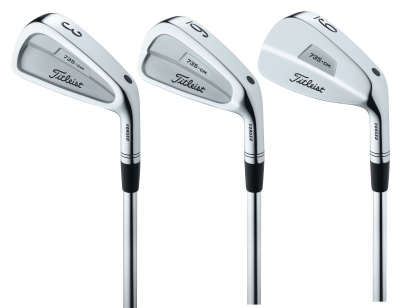 |
He continues, �But the 735 isn�t designed to be forgiving or for game improvement. The 735s are designed to offer the better player the ultimate in long iron playability and mid/short iron control. If the average player is looking for these other types of qualities (forgiveness or game improvement) in a golf club, we have other models for them as well.�
The company�s success has made it well known on the fairways, and it�s not surprising that even the occasional player would be curious about Titleist�s newest products. Part of that is due to exposure through general advertising, part of it is because of sheer numbers on the golf course (like fishing balls from a pond), and yet another is through equipment counts amongst the pros.
�Titleist is CLEARLY the #1 iron amongst competitive golfers. We are number one in player count in irons on the PGA Tour, we�re number one amongst Club Professionals and we�re also in the top spot for competitive amateurs. You won�t find a more competition-proven iron anywhere, period,� McGinley announced.
With that said, the first thing I noted when examining the 735 CM�s was that they�ve got three different types of club heads. We�re seeing a lot of multi-headed sets these days, and my first impression was �this is Titleist�s version of the Nike Pro Combo.� The original �mixed set� concept was to provide the type of head that works best with different club lengths and lofts � something that might not necessarily be garnered from one standard type of club head within an iron set.
McGinley says the 735�s are not a mixed set, however. �The new 735 irons are a blended set � meaning, the design is truly blended for appearance, performance and specifications. We didn�t just take the best features from several different sets of irons and throw them together in a mixed or combo set. The 735 set is built from the ground up to provide the best long, mid and short iron performance.�
�There are actually nine types of irons in this set � 2,3,4,5,6,7,8,9 & P � they�re all created individually, but blended perfectly to work with their neighbor,� McGinley explained. �I see these clubs attracting a wide range of better golfers. From players currently using muscle backs (forged blades) but looking for more long iron playability, to those using cavity backed irons seeking a more traditional look from the scoring clubs.�
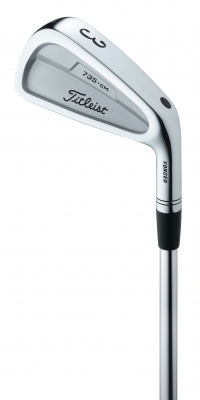 |
It�s more than just the looks, though the clubs certainly rate high in the attractiveness factor (in all fairness, I haven�t seen an �ugly� iron from any manufacturer in a long time). McGinley says they�re a well executed set of irons in terms of profile, shape, size and offset � and they are.
Oddly enough, the head sizes also progress in blade length from the shortest irons to the longest, so the heads on the long clubs are slightly bigger than the short. It�s almost like a �blend� of oversized and standard sized heads as well, if you think about it.
Then there�re the performance benefits of the 735 CM�s. Best to have McGinley explain that one. �As far as flighted performance, the long irons are more playable because of the size of the cavity. The short irons are more controllable because of the size of the muscle back design. The flighting (meaning the window through which the ball flies) is very tight from long irons to short, just what good players are looking for.�
Technically speaking, the 735s include a unique �bore-thru� feature. The modified bore-thru design takes weight from the heel and uses it to reposition the center-of-gravity lower and closer to the face center, which means it�s slightly more towards the toe.
�Most traditional short blade irons have the weight biased closer to the heel. Because of this modified bore-thru, there�s a more consistent set of launch and spin conditions throughout the set on the 735�s. And by replacing the mass from the modified bore-thru with a lighter weight pin, we also improve feel. The pin acts to dampen vibration before it travels up the hosel,� McGinley lectured.
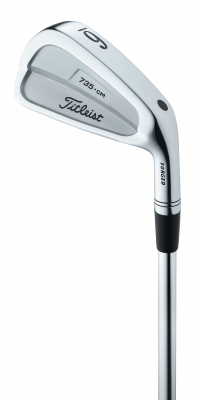 |
No more stinging hands on cold mornings, thank you very much.
As emphasized earlier, the 735 CM�s are forged, which acts as a technological advancement and a throwback to the old days at the same time. In past decades, forged irons were chiseled and grinded out of blocks of metal. Now, it�s no longer quite like that � but the benefits you�ve always derived from forged clubs are still there, and some of the limitations have been reduced.
Again, McGinley sheds light on how it�s better: �The biggest difference between the new forged clubs and the older models is the manufacturing process, which we�ve worked very hard to modernize. It starts with a multiple step forging process where the clubs are hammered with progressively more accurate dies. The end result is that no real grinding is needed to produce the final shape, just a light polishing.�
�Then there are several machining operations involved to ensure consistency and accuracy. The faces are milled flat and the scorelines are machine cut. The hosel�s outside and inside diameter are machined, insuring accurate loft and lie. And the final outside profile is milled,� McGinley added.
So even though the forging process is now very automated, there�re still some �personal� touches involved with the final product.
The benefits from forged irons being the ultimate in feel, distance and shot control � again, for the better players who can work golf clubs to their ultimate advantage.
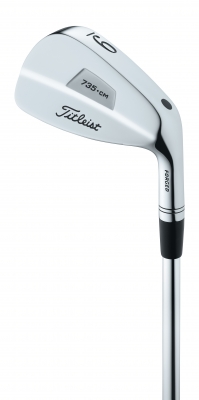 |
Being a mid-handicapper, I found the 735 CM�s to be a functional iron. When you hit it well, a forged iron provides the sweetest feel you�re ever going to experience � similar to what Roy McAvoy (in �Tin Cup�) described as �the feeling that goes straight to your loins.�
But they�re also somewhat less forgiving than the genre of oversized, perimeter weighted irons we�ve tried in the past. We don�t test clubs scientifically, and I�d say � if you�re a good player, or someone who�s looking to become good -- you should have a conversation with your trusted local professional, and then try out the 735 CM irons. As always, proper fitting is a must.
Forged clubs do seem a tad more difficult to hit, and for the mid-handicapper who doesn�t always find the optimum places on the club face, they can provide somewhat more frustration. But that shouldn�t discourage you from trying them. Like many in the nearly forty age group, I grew up playing tiny forged blades, and the looks of forged clubs remains attractive and welcome. I�ve enjoyed hitting the 735�s for that very reason.
Not to mention the 735 CM's are a big improvement over the 'vintage' forged clubs -- in looks, size and performance.
The 735 CM's looks and sound are probably significantly different than the cast club heads you�re likely using now � and in the right circumstances, can offer a marked improvement.
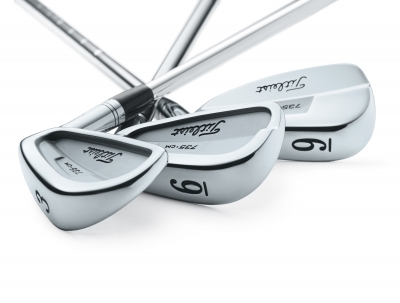 |
As always, we�d recommend giving the Titleist 735 CM�s a try. You never know, you just might find yourself in the right niche.
Note: Check the links below for examinations of other Titleist products.
Details:
The Titleist 735 CM Irons
Available at your higher-end golf retailers and club pro shops.
For individual characteristics of each club, we suggest consulting Titleist�s website, at: http://www.titleist.com/. We�d also admonish you not to buy anything � balls or clubs � without consulting your local professional for some serious advice. Otherwise, you could be buying something that won�t give you your money�s worth.
| Related Links | Comments on this article? | |
|
Maryland National Golf Club Hollow Creek Golf Club Rocky Gap Resort PB Dye Golf Club in Ijamsville Whiskey Creek Golf Club |
E-mail Jeff Rendall, Editor: jrendall@golftheunitedstates.com |













